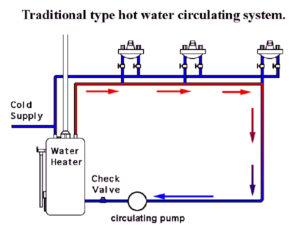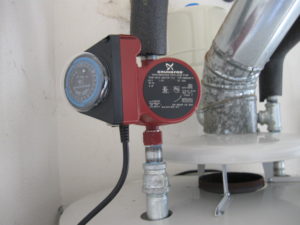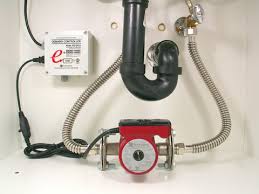Hot Water Delivery Problems
Many of the hot water complaints we get are “the hot water takes forever to get to where I’m using it”. The reason is, the hot water has to travel from where it is being heated- the water heater unit through the pipes to the fixture being used. Depending on the piping system in your home and distance from the water heater, this can take a long time-wasting tens of gallons of water. An average home has approximately 125 ft of 3/4 inch piping. 125 feet of 3/4″ pipe holds 3.14 gallons of water. 10 draws per day wastes over 31 gallons of water waiting for the water to get hot. Over a year, the wasted water could equal 11,461 gallons.
Water is our most precious resource, without it we couldn’t survive. We should take every precaution to save and protect it. Not to mention the inconvenience and time wasted. One way to eliminate the wait and waste of hot water is to utilize a hot water circulation pump system.
What is a Hot Water Circulation Pump System?
When the water heating source is a long way away from the fixture calling for hot water like a shower, bathtub, kitchen and lavatory sink, the wait for hot water delivery can be quite long. One way to remedy this problem is with an electronic pump and water piping system. Recent larger homes will already be plumbed with a recirculation piping system and pump at the water heater. This separate water pipe is connected to the hot water piping at the furthest most fixture from the water heater. The pump (which is usually installed at the bottom of the water heater) pulls the hot water from the top outlet of the water heater all the way to the furthest fixture connection, then pushes the water back into the bottom of the water heater. This method is best because it doesn’t waste any water during the process. This is very convenient especially when only a small amount of hot water is needed- like washing your face.

Types of Circulation Pumps
When it comes to circulating hot water technology has provided us with many options. Here we will look at choices the consumer has:
- Pumps installed at bottom of water heater drain valve- requires a return water line from the furthest fixture. Usually plumbed when the home was built but can be added later.

- Pumps installed at top of water heater- utilizes a manifold tee at the furthest fixture and pushes hot water into cold water.

- Pumps installed at the furthest fixture, usually under a lavatory sink. Requires an electrical GFI outlet under the sink. Controlled by a motion sensor or push button.

It is not good for a circulation pump to be running all the time, it wastes energy and wears out your plumbing system.
This can be controlled in several ways:
- Install a timer that turns the pump on and off according to your needs and schedule. This eliminates the pump running for instance at night when people are sleeping.
- Install a thermostat switch on the piping. This system has a sensor that attaches to the return hot water line, as the piping heats up the sensor will shut off the pump when the desired temperature is reached. This is good for people that don’t have set schedules.
- Motion sensor- installed usually under a toe kick of a cabinet or overhead. Turns pump on and off when someone walks into the room.
- Push-button- will activate the pump on-demand at the push of a button. Great for people who want control.





